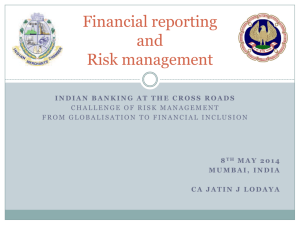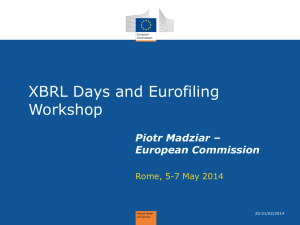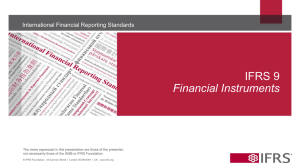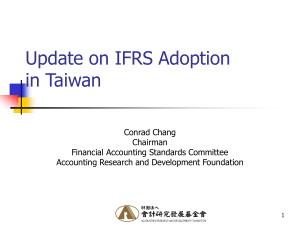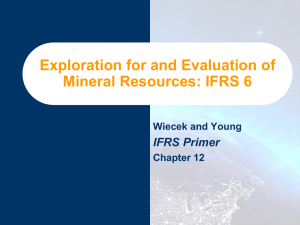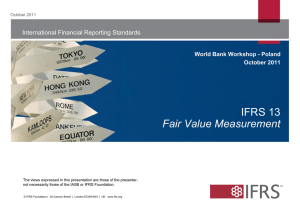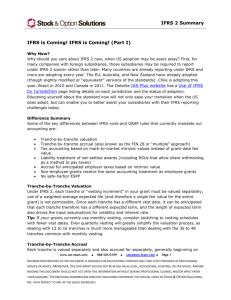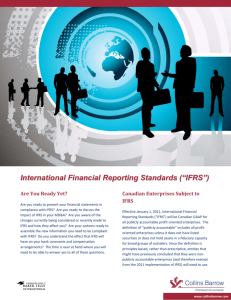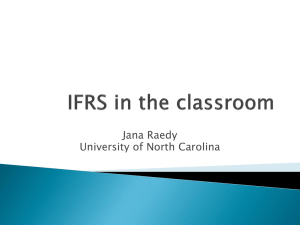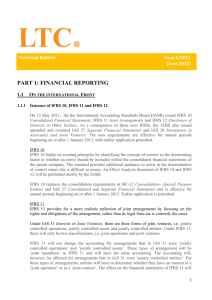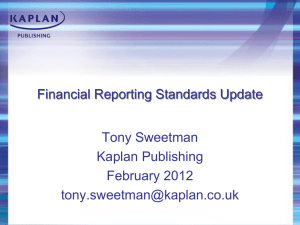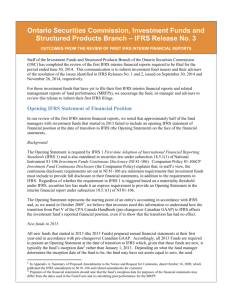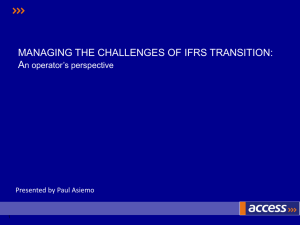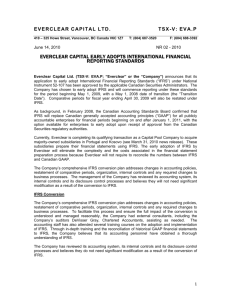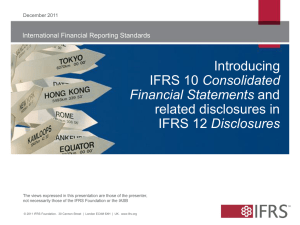IFRS and Basel 2
advertisement
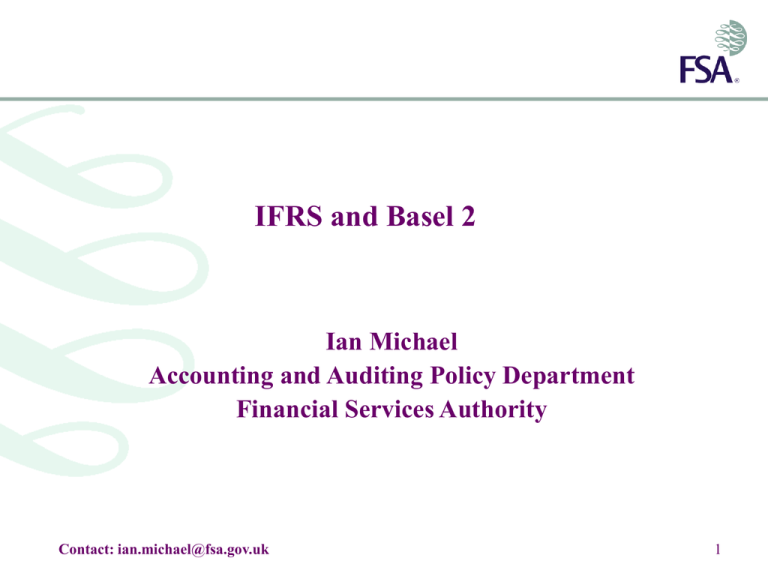
IFRS and Basel 2 Ian Michael Accounting and Auditing Policy Department Financial Services Authority Contact: ian.michael@fsa.gov.uk 1 IFRS and Basel 2: Key themes • • • • Widespread adoption of IFRS Interaction of IFRS with existing regulatory rules Interaction of IFRS with Basel 2 Disclosure requirements 2 Widespread adoption of IFRS • IFRS increasingly becoming global standards • Adoption in EU from 2005 (mandatory for group accounts of listed companies) • Now used in nearly 100 countries 3 EU Experience • Adoption of IFRS appears to have gone quite smoothly, even though differences from national GAAPs often significant 4 Typical differences between IFRS and national GAAPs relevant to financial sector • • • • • Valuation – especially use of fair values Classification of financial instruments Hedge accounting Consolidation Netting 5 Interaction of IFRS with existing regulatory rules • Definition of regulatory capital • ‘Prudential filters’ 6 Definition of regulatory capital • IFRS (IAS 32) will sometimes indicate a different split between equity and liabilities than national GAAP • However, definition of regulatory capital driven to a considerable extent by the Basel Accord • Note that regulatory capital includes some elements which are unquestionably accounting liabilities, eg subordinated debt • However, impact of IFRS on measured equity is the key reason for prudential filters 7 Prudential filters (1) • Cash flow hedges. Under IAS 39, cumulative fair value gains/losses on hedging instruments are recognised directly in equity, to the extent hedges are effective But such gains/losses excluded from regulatory capital • Application of fair value option to an institution’s liabilities. Gains/losses arising from changes in an institution’s own credit risk are excluded from regulatory capital 8 Prudential filters (2) • Available – for – sale instruments – loans – debt securities – equities • Own – use and investment properties 9 Two important areas of difference between prudential and accounting treatments • Securitisations • Netting 10 The Fair Value Option (FVO) • • • • No prudential filter, but… Supervisory Guidance on use of FVO by banks Guidelines and recommended practices address: (a) Sound risk management and control processes for banks that utilise the FVO; (b) Supervisory consideration of banks’ use of the FVO in the context of evaluating the adequacy of risk management and regulatory capital Approach to FVO needs to be set in context of a supervisor’s overall strategy towards an institution 11 Interaction of IFRS with Basel 2 • Most significant issue is the relationship between accounting loan loss provisions, which under IAS 39 are based on an incurred loss model, and the Basel 2 concept of expected loss • This is discussed in draft Basel paper on ‘Sound credit risk assessment and valuation for loans’ • Commonality of methodologies and data for credit risk assessment, accounting and capital adequacy purposes • Nonetheless, accounting and Basel 2 numbers may differ 12 Disclosure requirements • Enhanced transparency and its contribution to market discipline has been a major theme in prudential regulation, and accounting, in recent years • Prudential response: Pillar 3 of Basel 2 • Accounting response: IFRS 7 – Financial Instruments Disclosures 13 Relationship between Pillar 3 and IFRS 7 • May have different scope • Audit assurance probably higher for IFRS disclosures • Pillar 3 emphasises credit risk model embedded within Basel 2, and in some other respects is more prescriptive • So Pillar 3 and IFRS are complementary 14
